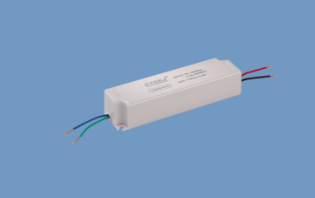news
China 12V AC to DC Converter for LED manufacture
Author: ZYG Power Module Time: 2023-8-22
Introduction:
LED lights have become increasingly popular due to their energy efficiency, long lifespan, and versatility. However, LED lights require a direct current (DC) power supply to function properly. This is where a 12V AC to DC converter comes into play. In this article, we will explore the importance of this converter, its working principle, and its applications.
Importance of a 12V AC to DC Converter:
As mentioned earlier, LED lights require DC power to operate. However, the electricity supplied to our homes is alternating current (AC). Therefore, it is crucial to convert the AC power to DC before supplying it to the LED lights. This is where the 12V AC to DC converter plays a significant role. It converts the 12V AC power into a stable 12V DC output, which is suitable for powering LED lights.
Working Principle:
The 12V AC to DC converter utilizes a rectifier to convert the input AC voltage into a pulsating DC voltage. It consists of diodes that allow the flow of current in only one direction. The diodes block the negative half-cycle of the AC waveform, resulting in a pulsating DC waveform. However, this pulsating DC is not suitable for powering LED lights as it may cause flickering and reduced lifespan. To overcome this, a smoothing capacitor is used to filter out the pulsations and provide a steady DC output. The capacitor stores energy during the high voltage peaks and releases it during the low voltage troughs, resulting in a smooth DC waveform.
Applications:
The 12V AC to DC converter for LED lights finds extensive use in various applications. Here are a few notable ones:
1. Residential Lighting: Many households are switching to LED lights due to their energy-saving nature. The 12V AC to DC converter ensures a steady supply of DC power to these lights, providing efficient and reliable lighting solutions.
2. Automotive Lighting: LED lights are widely used in automobiles for their durability and low power consumption. The 12V AC to DC converter ensures a stable power supply to the LED headlights, taillights, and interior lights in vehicles.

3. Outdoor Lighting: LED lights are commonly used for outdoor lighting, including street lights, garden lights, and floodlights. The 12V AC to DC converter is crucial in these applications as it enables the LED lights to operate in outdoor environments where AC power is readily available.
4. Commercial Applications: LED lights are extensively used in commercial buildings, offices, and retail outlets. The 12V AC to DC converter ensures a reliable power supply to these lights, contributing to energy efficiency and cost savings.
Conclusion:
The 12V AC to DC converter plays a vital role in powering LED lights efficiently and safely. Its ability to convert the AC power to a stable DC output ensures the proper functioning and longevity of LED lights. With the increasing popularity of LED lighting, the demand for reliable AC to DC converters continues to grow. Whether it is residential, automotive, outdoor, or commercial applications, the 12V AC to DC converter is an indispensable component in the LED lighting industry.
Previous: Customized Electric Power Series: Harnessing the Energy Revolution
Next: AC/DC Power Supply Module: Meeting Global Power Needs with Versatility and Reliability
relevant information
-
2024-12-31
Special power supply: customized energy solutions that empower high-tech fields
In today's rapidly developing science and technology, special power supplies, as a unique force in the field of power supply, are providing indispensable energy support for many high-tech fields with their high degree of customization, high efficiency and high reliability. From precision medical equipment to deep-sea exploration equipment, from high-energy physics experiments to aerospace technology, special power supplies have become an important cornerstone for promoting scientific and technological progress and innovation with their unique technical characteristics and wide application fields. 1. Definition and characteristics of special power supplies Special power supplies, as the name suggests, refer to power supply equipment designed and manufactured to meet specific application requirements. Compared with traditional general power supplies, special power supplies have the characteristics...
View details -
2023-6-2
Shining Bright with the LED Power Series
In recent years, the LED Power Series has entered the market with a bang. This series of LED lights has become increasingly popular due to its many benefits, including energy efficiency, long lifespan, and bright illumination capabilities. LED stands for Light Emitting Diode. The diode is a semiconductor device that emits light when an electric current passes through it. LEDs are known for being more energy-efficient than traditional lighting options, such as incandescent bulbs and fluorescent lights. LED lights have a low wattage requirement and can save up to 80% on energy costs compared to traditional lighting. Another benefit of the LED Power Series is its long lifespan. LED lights can last up to 25 times longer than traditional lighting...
View details -
2023-4-19
Building a 120V AC Power Supply for 3V DC Output
Introduction: In this tutorial, we will learn how to build a 120V AC power supply that outputs 3V DC. This is a simple project that can be completed by anyone with basic knowledge of electronics. The power supply can be used to power small electronic projects, such as LED lights or small motors. Let\'s get started! Materials Required: - 120V AC power source - Transformer (120V AC to 3V AC) - Bridge rectifier (1N4007) - Capacitor (1000uF, 16V) - Voltage regulator (LM7805) - Heat sink - Resistor (220 ohm) - LED - Breadboard - Jumper wires Instructions: Step 1: Connect the Transformer Connect the primary side of the transformer to the 120V AC power source. The secondary side of the...
View details -
2023-9-7
Fully Modular Power Supply: The Future of Efficient Energy Distribution
Introduction: Where energy conservation and efficiency are of utmost importance, technological advancements in power supply systems are crucial. One such innovation that has gained significant attention is the fully modular power supply. This article will explore the concept, advantages, and future prospects of fully modular power supplies in the field of efficient energy distribution. Understanding Fully Modular Power Supply: A fully modular power supply is a cutting-edge system that allows users to connect only the required cables to their devices, eliminating unnecessary clutter. Unlike traditional power supplies, which come with a fixed set of cables, fully modular power supplies offer the flexibility to connect and disconnect cables as per the specific requirements of the system. This feature not only enhances...
View details -
2023-8-28
The Electric Power Series: Illuminating the World
Electricity has become an essential part of our daily lives. From powering our homes to fueling industries, electricity plays a crucial role in shaping the way we live, work, and interact with the world. The Electric Power Series, a revolutionary advancement in electrical technology, has been instrumental in illuminating the world. The Electric Power Series comprises a range of groundbreaking inventions and innovations that have revolutionized the generation, transmission, and consumption of electrical power. From the invention of the electric generator to the development of efficient transmission systems, this series has paved the way for the electrification of our society. The first major breakthrough in the Electric Power Series was the invention of the electric generator. In the late 19th...
View details -
2023-7-14
ZP Series AC DC Converter: Unleashing Power and Efficiency
In the fast-paced world we live in, where technology is constantly evolving and becoming more sophisticated, there is a growing demand for power conversion solutions that are both powerful and efficient. The ZP Series AC DC Converter has emerged as a frontrunner in meeting these demands, providing reliable and high-performance power conversion for a wide range of applications. The ZP Series AC DC Converter, manufactured by a leading power electronics company, is a compact and versatile device that converts alternating current (AC) to direct current (DC). It boasts an impressive power output and efficiency, making it an ideal choice for various industries, including telecommunications, industrial automation, renewable energy, and electric vehicle charging. One of the key features that sets the...
View details


















